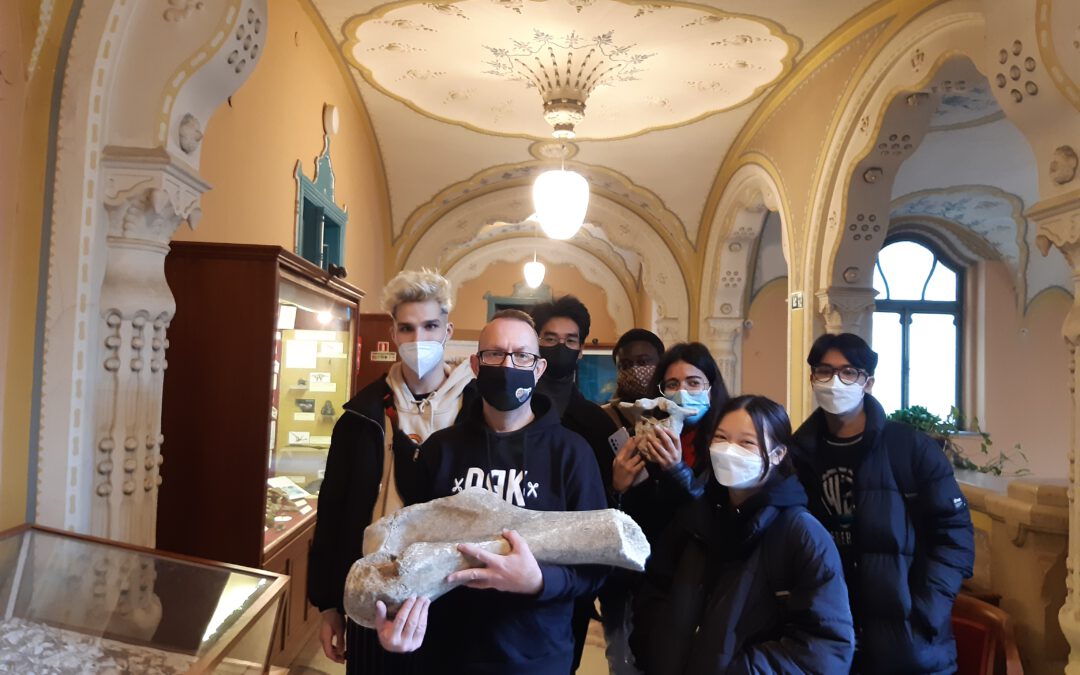The Basic Geology practical classes, for our English speaking Environmental Science students, were held 23 September at the Geological Museum by the Mining and Geological Survey of Hungary (MBFSZ in Hungarian). First of all, we got information, with the excellent professional management of the MBFSZ, about the history of science in the representative hall of the Stefánia road site: instead of the current Miksa Hantken and Lajos Lóczy (the elder) ex-director statues, once the entrants were welcomed by Franz Joseph and Sissi. Also, there was a statute of a mammoth in style on the middle, now orphaned, marble pedestal. It was followed by a practice in the basement labs: our students tested the rock sample shredder, saw the process of making fine grinds, had the opportunity to grab rock samples of different sizes and types, and then examined the thin grinds in a microscope through polarizing filter. Going upstairs, they observed dinosaur and mammal footprints of the huge rock sheets of Ipolytarnóc.
Being Environmental Science students, the presentative and comparative map of the optiomal and real locations of domestic waster producers and landfills was particularly useful. They could see the dinosaur bones (by Baron Nopcsa) excavated from Bakony by the Transylvanian and the Hungarian Dinosaur Research Expedition.
Entering the Council Hall, the student viewed the permanent exhibition entitled “History of Hungarian Geology”. They admired the luminous minerals in the Cherepy collection from the Franklin-Sterling ore deposits in New Jersey, USA.
Finally, we visited the library of the institution which is also the largest geological library in the country.
